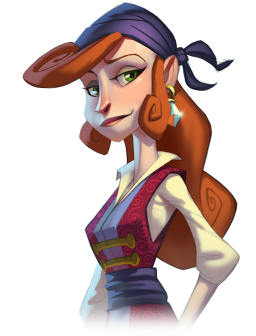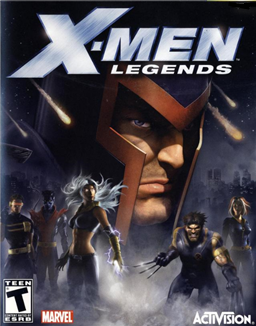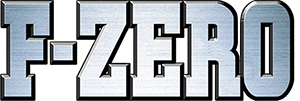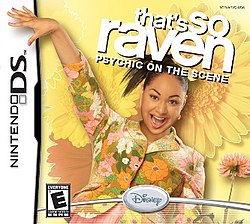
Super Mario Land is a 1989 side-scrolling platform video game developed and published by Nintendo as a launch game for its Game Boy handheld game console. It is the first Mario platform game to have been released for a handheld console. In gameplay similar to that of the 1985 Super Mario Bros., but resized for the smaller device's screen, the player advances Mario to the end of 12 levels by moving to the right and jumping across platforms to avoid enemies and pitfalls. Unlike the other Mario games, Super Mario Land is set in Sarasaland, a new environment depicted in line art, and Mario pursues the debuting Princess Daisy. The game has two Gradius-style shooter levels.
Mother is a video game series that consists of three role-playing video games: Mother (1989), known as EarthBound Beginnings outside Japan, for the Family Computer; Mother 2 (1994), known as EarthBound outside Japan, for the Super Nintendo Entertainment System; and Mother 3 (2006) for the Game Boy Advance.

Star Wars: Knights of the Old Republic is a role-playing video game developed by BioWare and published by LucasArts. The first installment of the Star Wars: Knights of the Old Republic series, it was released for the Xbox on July 16, 2003, and for Microsoft Windows on November 19, 2003. It was ported to Mac OS X, iOS, and Android by Aspyr, and it is playable on the Xbox 360, Xbox One, and Xbox Series X and Series S via backward compatibility. A Nintendo Switch version was released on November 11, 2021.

Pokémon Snap is a 1999 first-person photography game with rail shooter style gameplay mechanics developed by HAL Laboratory and published by Nintendo for the Nintendo 64. It was first released in Japan in March 1999 and was later released in July 1999 in North America and in September 2000 for PAL regions. It is a spin-off game in the Pokémon series, being one of the first console-based games for it, and featuring many Pokémon rendered for the first time in real-time 3D. The game was re-released for the Wii's Virtual Console in December 2007, for the Wii U's Virtual Console in 2016, and for the Nintendo Switch Online + Expansion Pack in June 2022.

Elaine Marley is a fictional character in the Monkey Island series of graphic adventure video games. Created by Ron Gilbert for LucasArts, the character first appears in The Secret of Monkey Island and is one of the core characters in the franchise. Originally conceived as a ruthless island governor, the character evolved during development into the protagonist's love interest. While the first two games in the series did not feature voice acting, Elaine was voiced by Alexandra Boyd in The Curse of Monkey Island and by Charity James in Escape from Monkey Island; Boyd would reprise the role for later entries in the franchise.

X-Men Legends is an action role-playing video game developed by Raven Software and published by Activision. It was released on the GameCube, PlayStation 2 and Xbox consoles in 2004. Barking Lizards Technologies developed the N-Gage port of the game, which was released in early 2005. Players can play as one of fifteen X-Men characters, with the ability to switch between four computer- or human-controlled characters at any time.

Mother 3 is a 2006 role-playing video game developed by Brownie Brown and HAL Laboratory and published by Nintendo for the Game Boy Advance. It is the third entry in the Mother series. The game follows Lucas, a young boy with psychic abilities, and a party of characters as they attempt to prevent a mysterious invading army from corrupting and destroying the world.

F-Zero is a series of futuristic racing video games originally created by Nintendo EAD with multiple games developed by outside companies. The first game was released for the Super Famicom in Japan in 1990, and along with North America’s Super Nintendo Entertainment System in 1991; its success prompted Nintendo to create multiple sequels on subsequent gaming consoles.

Backyard Football is a series of video games for various systems. The series was developed by Humongous Entertainment and published by Infogrames, Atari and The Evergreen Group. It is one of several sub-series in the Backyard Sports series, and is the first to feature professional players as kids, examples being Steve Young and Barry Sanders. The series currently has eleven titles.

Lego Star Wars II: The Original Trilogy is a Lego-themed action-adventure video game developed by Traveller's Tales and published by LucasArts and TT Games Publishing. It was released on 11 September 2006. Part of the Lego Star Wars series, it is based on the Star Wars science fiction media franchise and Lego Group's Lego Star Wars eponymous Star Wars-themed toy line. It follows the events of the Star Wars films, A New Hope, The Empire Strikes Back and Return of the Jedi. The game allows players to assume the roles of over 50 Lego versions of characters from the film series; customized characters can also be created. Camera movement was improved from its predecessor Lego Star Wars: The Video Game and the concept of "vehicle levels" was explored more thoroughly. The game was revealed at American International Toy Fair. Promotions for the game were set up at chain stores across the United States.

Mario Party 8 is a 2007 party video game developed by Hudson Soft and published by Nintendo for the Wii. The game is the eighth main installment in the Mario Party series, and the first title in the series released for the Wii. It was also the final home console entry to be developed by Hudson Soft, as NDcube took over development duties from Mario Party 9 onwards.

Midna is a fictional character introduced as one of the main protagonists in The Legend of Zelda: Twilight Princess, a 2006 video game in Nintendo's The Legend of Zelda series. She is a member of the magic-wielding Twili who joins forces with Link to prevent the kingdom of Hyrule from being enveloped by a corrupted parallel dimension known as the Twilight Realm. While Midna appears as an imp-like creature in the majority of Twilight Princess, her actual form is humanoid. She was designed by Yusuke Nakano and voiced by Akiko Kōmoto. Midna's first appearance was in a trailer for Twilight Princess shown at the 2005 Electronic Entertainment Expo (E3); at the time, her gender was unknown, leaving some journalists confused about it.

Star Wars Episode I: Obi-Wan's Adventures is a video game that chronicles the events of the film Star Wars: Episode I – The Phantom Menace from the character Obi-Wan Kenobi's perspective. It is the result of an agreement made in 2000 between the two video game publishers LucasArts and THQ. The agreement allows THQ to turn LucasArts licenses into games for the hand held console Game Boy Color, the first being Obi-Wan's Adventures. THQ published the game and HotGen developed it. It was released on December 6, 2000.

Star Wars: The Force Unleashed is an action-adventure game developed by LucasArts and part of The Force Unleashed multimedia project. It was initially developed for the PlayStation 2, PlayStation 3, Wii, and Xbox 360 consoles and on iOS, second-generation N-Gage, Nintendo DS, PlayStation Portable, and Java-equipped mobile phone handhelds. The game was released in North America on September 16, 2008, in Australia and Southeast Asia on September 17, and in Europe on September 19. LucasArts released downloadable content for the PlayStation 3 and Xbox 360 consoles. An Ultimate Sith Edition of the game, containing both new and previously released downloadable content, was released in November 2009, and later ported to the macOS and Microsoft Windows. An enhanced remaster of the Wii version, developed by Aspyr, was released on Nintendo Switch on April 20, 2022.

Bratz Super Babyz is a video game based on the Bratz Babyz doll line.

F1 2009 is a video game based on the 2009 season of the Formula One motor racing series. It was released on the Wii and PlayStation Portable in 2009 on 16 November in North America, 19 November in the PAL region and 20 November in the United Kingdom. The game was also released on iOS on 14 December for £6.99. The PlayStation Portable version was also available as a download from the PlayStation Store from 16 November.

Star Trek: Voyager – Elite Force is a first-person shooter video game developed by Raven Software and published by Activision. The game was originally released on September 15, 2000 for Windows and Mac OS. A port for Mac OS developed by Westlake Interactive and published by Aspyr Media was released on November 20, 2002. Elite Force was ported to the PlayStation 2 by Pipe Dream Interactive and published by Majesco Entertainment on December 11, 2001.

Carmen Sandiego Adventures in Math is a series of five games released in 2011/2012 for the Wii, and is part of the Carmen Sandiego franchise. The style of the games are reminiscent of comic books. The 5-part series were the first English language console games from the Carmen Sandiego franchise since The Secret of the Stolen Drums. These "short, educational detective adventures" were only available as a download through the Nintendo Wii Shop. The games were developed by Gamelion Studios, and published by Houghton Mifflin Harcourt. They could take up to 6 players, and required 600 Wii points. Maths topics included in the games include: Symmetry, Identifying angles, Graphing coordinates on a grid, Logic puzzles, Working with fractions, Solving equations, and Tangrams. The games are designed for elementary learners across grades 3–5.

Ness is a fictional character in the Mother role-playing video games published by Nintendo, created by Japanese video game designer Shigesato Itoi. His first appearance was in the 1994 Super NES game EarthBound, the second entry from the series, in which he serves as the game's main protagonist and playable character. He also appears as a playable fighter in the Super Smash Bros. series of fighting games where he is voiced by Makiko Ohmoto.


















